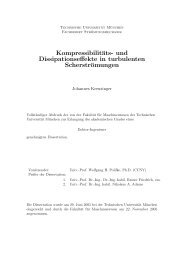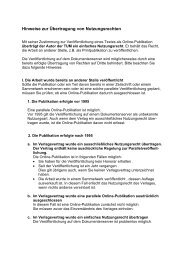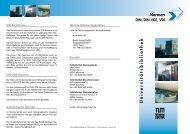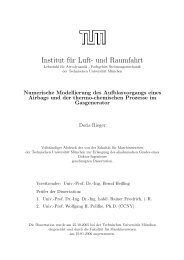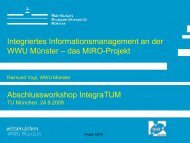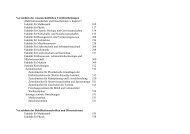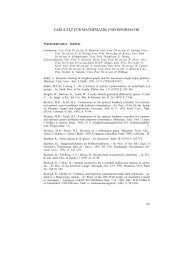LES of shock wave / turbulent boundary layer interaction
LES of shock wave / turbulent boundary layer interaction
LES of shock wave / turbulent boundary layer interaction
You also want an ePaper? Increase the reach of your titles
YUMPU automatically turns print PDFs into web optimized ePapers that Google loves.
in terms <strong>of</strong> surface pressure, skin friction, and heat transfer distributions.<br />
Furthermore, these approaches turn out to be unable to predict<br />
the unsteadiness <strong>of</strong> the <strong>shock</strong> system, which is, however, a very important<br />
feature <strong>of</strong> SWTBLI. Comprehensive summaries <strong>of</strong> the current status<br />
<strong>of</strong> computational fluid dynamics (CFD) on the prediction <strong>of</strong> SWTBLI<br />
are due to Zheltovodov et al. (1992); Zheltovodov (1996), and Knight &<br />
Degrez (1998).<br />
A main deficit <strong>of</strong> RANS approaches is that for unsteady flows, statistical<br />
turbulence modeling can be expected to reproduce the proper<br />
temporal mean-flow behavior only if mean-flow time scales and fluctuation<br />
time scales are separated so that standard assumptions involved<br />
in turbulence modeling can be applied. This is not the case for SWT-<br />
BLI because <strong>of</strong> its essential unsteadiness. Sinha et al. (2005) proposed a<br />
<strong>shock</strong>-unsteadiness correction for k − ǫ, k − ω and Spalart-Allmaras turbulence<br />
models. The simulations in 16, 20 and 24 ◦ -degree compression<br />
corners demonstrated an improvement over existing models, although<br />
the length <strong>of</strong> the separation zone was not predicted correctly.<br />
An alternative to RANS are the Large-Eddy-Simulation (<strong>LES</strong>) and<br />
Direct Numerical Simulation (DNS) approaches. DNS recovers the entire<br />
temporal and spatial flow information. Since all relevant flow scales<br />
need to be resolved DNS is limited essentially by the available computer<br />
power. In practice, only rather small Reynolds numbers and narrow<br />
computational domains can be considered. The range <strong>of</strong> flow parameters<br />
where most <strong>of</strong> experimental data are available cannot be reached.<br />
Spatial and temporal resolution requirements can be lowered by employing<br />
<strong>LES</strong> at the expense <strong>of</strong> modeling the effect <strong>of</strong> discarded scales. For<br />
<strong>LES</strong>, evolution equations for the low-pass filtered solution are solved.<br />
The instantaneous <strong>interaction</strong> <strong>of</strong> these so-called resolved scales with the<br />
remainder range <strong>of</strong> scales needs to be modeled. For a comprehensive<br />
account <strong>of</strong> current <strong>LES</strong> the reader is referred to the textbooks <strong>of</strong> Sagaut<br />
(2002); Garnier et al. (2007). Nevertheless, <strong>LES</strong> maintains the main advantages<br />
<strong>of</strong> DNS, namely providing the full spatial and temporal flow<br />
information down to the smallest resolved scales. Based on recent advances<br />
in modeling and computing, <strong>LES</strong> nowadays can be considered<br />
as the most appropriate numerical tool for the analysis <strong>of</strong> complex unsteady<br />
transitional and <strong>turbulent</strong> flows. However, as pointed out by<br />
Knight et al. (2003) and Zheltovodov (2004), even <strong>LES</strong> predictions need<br />
to be interpreted with care.<br />
<strong>LES</strong> simulations can be very expensive at high (experimental)<br />
11



